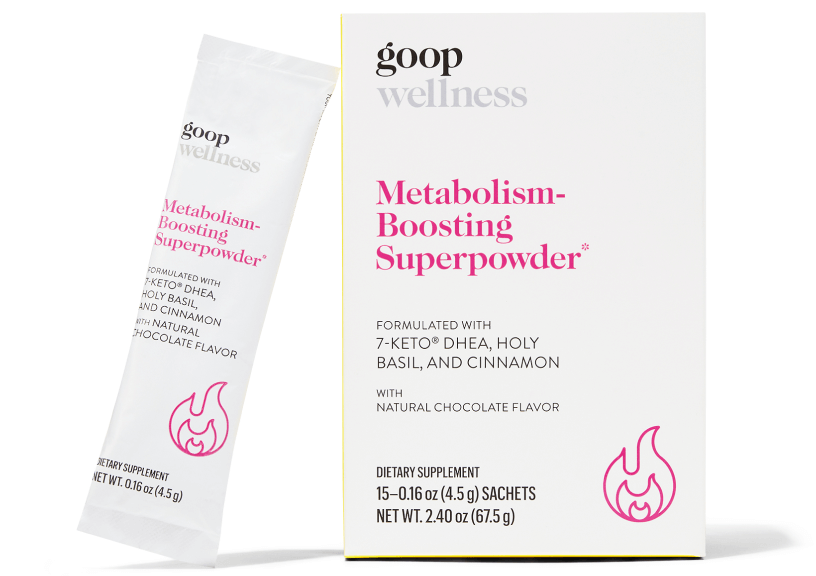Daily Habits for Healthy Blood Sugar | Goop

A quick bio lesson: Your body needs energy to maintain normal function. You get that energy from food, which your body breaks down into smaller parts and can either absorb and use or excrete. When you eat carbohydrates, your body breaks them down into glucose, a simple sugar that’s your body’s primary source of fuel. Glucose travels through the body in your bloodstream, and it’s taken up by cells—in the muscles, the brain, nearly everywhere—to be converted into energy that helps you carry out nearly all your body’s activities, from solving problems at work to running marathons.
Without enough blood sugar, our bodies wouldn’t work. Too much blood sugar can cause problems, too. That’s why we have hormone signaling pathways that help keep blood sugar stable within the normal range. But sometimes—and for many possible reasons—it can get thrown off a little or a lot.
How is blood sugar regulated in the body?
Blood sugar balance is maintained by your hormones. This balance ensures that the body has enough energy available when you need it, and it’s primarily maintained by hormones: insulin and glucagon.
Made in and released from the pancreas, insulin lowers blood sugar by instructing cells throughout the body to take in glucose (sugar). As glucose enters the cells to be used as energy or stored as glycogen, there is less left in the blood.
Glucagon makes blood sugar rise. When blood sugar levels are too low—typically several hours after you eat—the pancreas releases glucagon. Glucagon instructs the liver and muscles to turn stored glycogen back into glucose and release it into the bloodstream.
There are other hormones involved in this process, too. Amylin and somatostatin inhibit the secretion of glucagon to lower blood sugar. Epinephrine, cortisol, and growth hormone make blood sugar rise, as glucagon does. Hormone changes that come with age make a difference, too: Our average baseline blood sugar levels tend to go up as we get older.
How does blood sugar affect your
appetite and metabolism?
In the hours after a meal, blood sugar rises as you digest the food you’ve just eaten, and then it falls back down again as your body uses that energy. How high your blood sugar spikes, how far it dips back down, and how long that whole process takes depends on several factors, including your individual biology, what you’ve eaten, and your activity levels. In general, the higher and faster your blood sugar spikes, the lower and faster it’ll drop back down. When blood sugar swings quickly to the low end of the normal range, it triggers a hormone response that leads to increased appetite and feelings of hunger, which may include sugar cravings. It may slow down your metabolism, too.
Of course, if you experience other signs of low blood sugar, like shakiness, sweating, anxiety, and irritability, you should talk to your doctor. They might want to run some tests to check if what you’re experiencing is symptoms of diabetes. Some nondiabetic people also experience physiological signs of low blood sugar a few hours after a meal. This condition is called reactive hypoglycemia. While symptoms are not typically severe, it’s worth talking to your physician about. Certain blood sugar balance strategies can help ease the symptoms.
How can you eat for
balanced bloodsugar?
Blood sugar balance is best achieved when you hit it from a few different angles. That includes some lifestyle modifications, which we’ll go over in a minute. But let’s start with some general guidelines for mealtime.
1. Lean on foods that have a low glycemic index
The glycemic index (GI) is a measurement of how food affects our blood sugar. It’s based on how fast the body breaks any carbohydrate-containing food down into glucose. Higher numbers (from about seventy to one hundred) indicate that a food will cause a faster increase in blood sugar levels, while lower ones (under fifty) represent foods that cause a more gradual rise—and typically a softer fall. You can find the glycemic index of many foods online on the University of Sydney’s glycemic index resource website.
-
2. Reduce refined sugars in your daily diet
Cutting down on foods made with refined sugars can be a good habit to get into if you’re trying to keep your blood sugar in check. If you’ve got a sweet tooth, it might be worth giving Sweetkick’s 14-Day Sugar Reset a go: It includes a daily supplement to support normal glucose and energy metabolism plus mints containing Gymnema sylvestre extract, which temporarily suppresses the taste of sweetness, which may help you identify sources of sugar in your diet.
-
 Sweetkick
Sweetkick
14-Day Sugar Reset
goop, $46SHOP NOW
3. Seek sources of chromium and magnesium
You can get plenty of magnesium from greens, avocados, dried legumes, nuts, seeds, and tofu. Most fruits and vegetables are good sources of chromium, but you’ll find especially high quantities in broccoli, green beans, and nutritional yeast. If you’re interested in supplements, LivOn Labs’ Liposomal Magnesium L-Threonate and The Nue Co.’s Regularity Relief both contain magnesium.
4. Load up on fiber
High-fiber foods, especially those packed with soluble fiber, have been shown
to help keep blood sugar balanced. You should be able to get enough by eating a diet rich in plant-based foods. If you’re looking give your diet a boost of soluble fiber, you might try adding fenugreek or chia seeds to your oatmeal or smoothies.
-
 goop Wellness
goop Wellness
Metabolism-Boosting Superpowder
goop, $55/$50 with subscriptionSHOP NOW
-
5. Add cinnamon
Cinnamon and cinnamon extract can help maintain healthy blood sugar levels when
used as part of your diet. Which is why we included 500 milligrams of cinnamon extract—equivalent to about two grams of cinnamon powder—in our Metabolism-Boosting Superpowder.
6. Consider keto
A low-carbohydrate diet like keto may keep blood sugar toward the low end and
within a tighter range. But because standard ketogenic diets tend to be restrictive and mostly skip over vegetables, it’s worth checking out a more-flexible, plant-based approach, like functional medicine practitioner Will Cole’s Ketotarian diet.
What other activities can help maintain
healthy blood sugar?
1. Manage your stress
In a stressful situation, your body prepares to react to a perceived threat
by dropping insulin levels and ramping up stress hormones like epinephrine and cortisol, all of which increase blood sugar. In a real fight-or-flight situation, this process ensures that you have enough energy immediately available to survive whatever threat you might be facing. But if your stressor is a pile of work tasks—not a threat to your life, even if it sometimes feels like it—you probably aren’t burning off the excess blood sugar. If you’re under chronic stress, it’s possible that your blood sugar could be chronically elevated, too. Stress management can help. Meditation and breathwork are good options that work, but if those are not your bag: Go for a hike. Spend time with friends. Play a round of tennis. Dance for five minutes. Whatever works for you.
2. Get enough sleep
One large study showed that people who get less than six hours of sleep a night
are much more likely to have reduced insulin sensitivity, meaning their cells aren’t as able to take up sugar out of
the blood.
3. Exercise regularly
Moving your body requires energy, which usually means your cells have to use
the sugars available in your bloodstream (thereby decreasing blood sugar). And studies have found that exercise can make your body more sensitive to insulin—that’s a good thing—for around twelve to twenty-four hours following a workout. Getting a daily workout in and moving your body throughout the day can help keep blood sugar well-regulated.
4. stay hydrated
Low water intake is associated with high blood sugar risk. Drinking plenty of water will help keep your blood hydrated and keep that risk low.
5. Limit use of caffeine or alcohol
Both caffeine and alcohol, in excess, can reduce insulin effectiveness in your body.
6. Eat mindfully
Mindful eating is the practice of present-moment awareness during a meal or a snack. Eat slowly, paying attention to the different tastes and textures of your food. Listen to your body for cues of satiety and satisfaction.
This article is for informational purposes only. It is not, nor is it intended to be, a substitute for professional medical advice, diagnosis, or treatment and should never be relied upon for specific medical advice. To the extent that this article features the advice of physicians or medical practitioners, the views expressed are the views of the cited expert and do not necessarily represent the views of goop.
This article was originally published by goop.com. Read the original article here.



